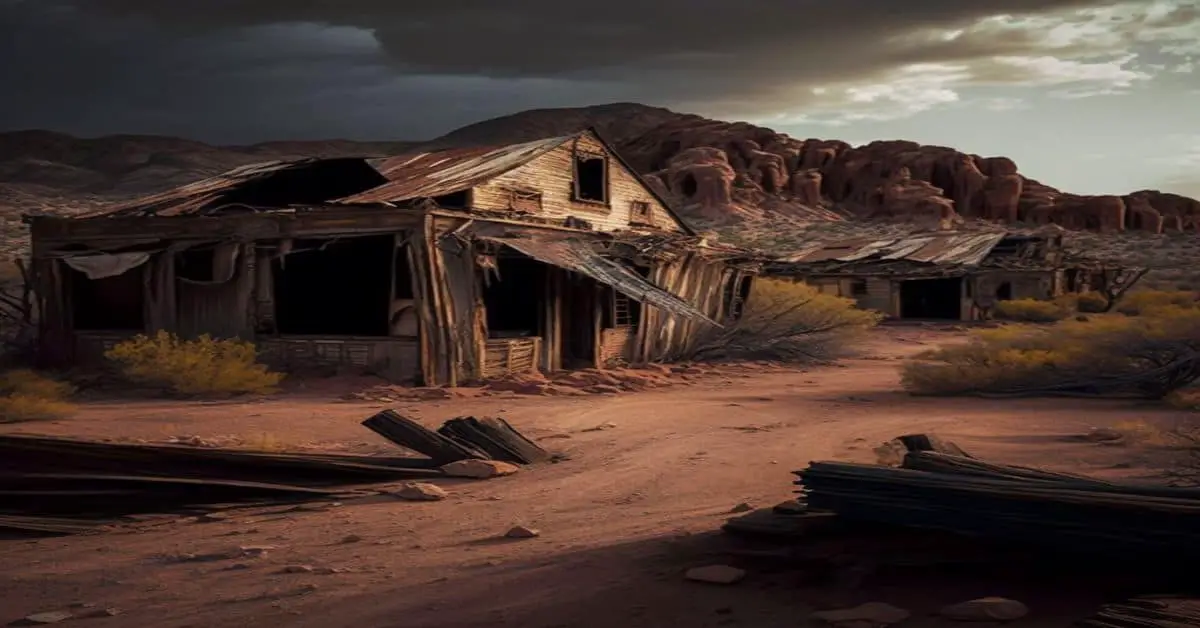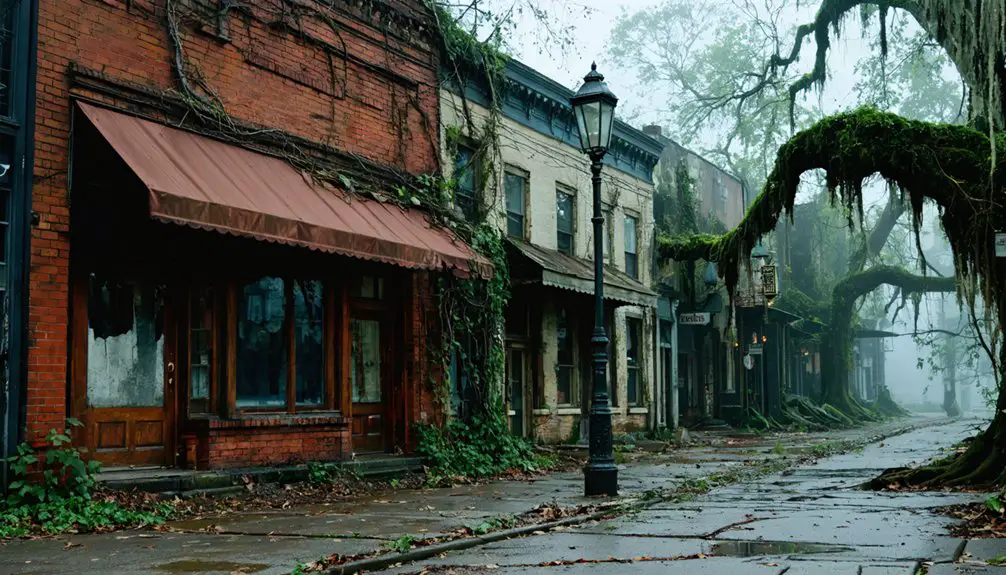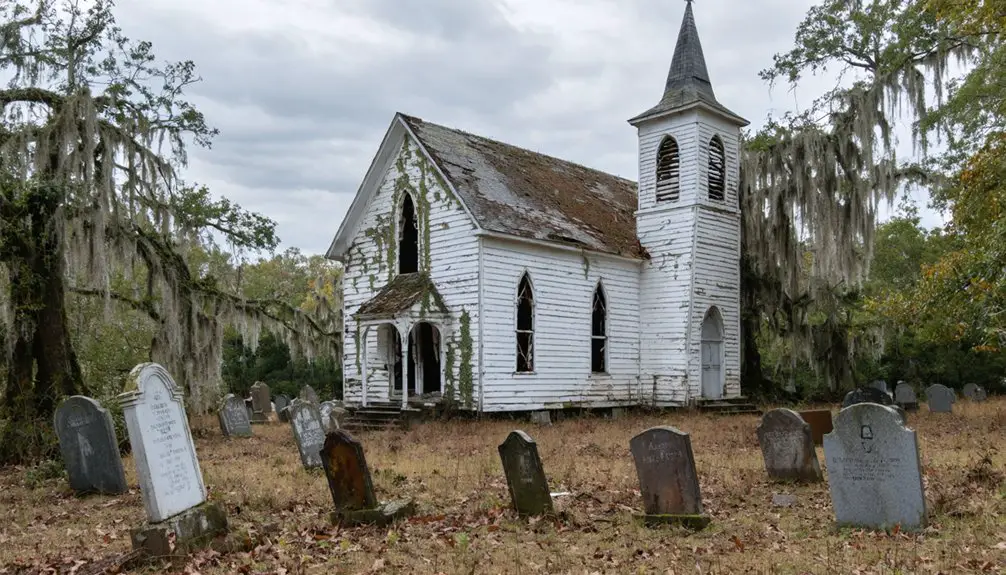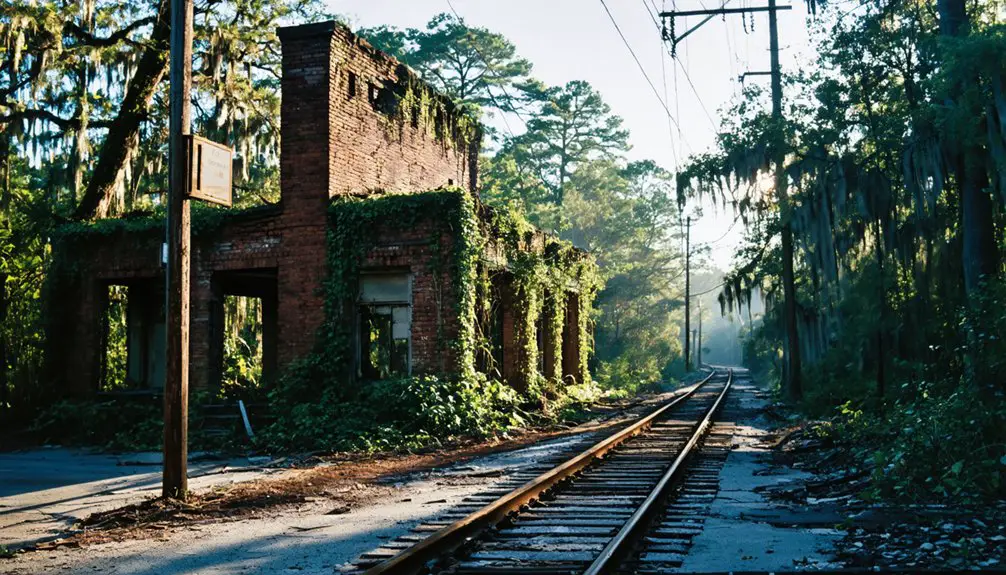On March 26, 1776, South Carolina was founded and became the eighth state to join the union on May 23, 1788. As one of the original 13 founding states, South Carolina was a prominent location in the Civil War.
20 ghost towns in South Carolina have been located, mapped, and documented. Due to the state’s deep history, each ghost town, battleground, village, and the park offers a glimpse into the past and what life was like for the early settlers.
Before becoming a state or part of the union, South Carolina was founded by Spanish explorers from Santo Domingo in 1521. Five years later, in 1526, Lucas Vasquez de Ayllon established the first European settlement, which lasted only a few months. In 1663, King Charles II founded the Province of Carolina, which included the land of both North and South Carolina.
The provinces that included the present-day land of the two Carolina states were split in 1729 to create North Carolina and South Carolina. Still, before taking on the name of South Carolina, it was known as Clarendon Province until 1776, when the name changed.
Andersonville, South Carolina
In 1800, Andersonville was founded in Anderson County and named after the Revolutionary War veteran Robert Anderson. Located at the Tugaloo and Seneca River forks, the town was well-known for trading and its textile mills.
In 1840, the town was flooded by the two rivers. The water destroyed the textile mills and other structures. Once the water receded and the townsfolks were able to rebuild the community, business went back to usual.
However, the second flood in 1852 further destroyed the town worse than the previous flood twelve years earlier. The railroads decided to bypass Andersonville, river traffic began to decline, local trading was less frequent, and the mills were no longer in operation as town residents relocated to more prosperous towns.
As of 1893, the town post office ceased operations and closed. When construction began on Lake Hartwell, much of Andersonville was lost. The town cemetery was soon to be underwater, so most of the bodies were moved to the Andersonville Baptist Church on the eastern shore of the narrow island, serving as the last piece of land for the former town. Boating or kayaking is the only way to access the island area.
Dorchester, South Carolina
Dorchester was officially founded in 1696 by Reverend Joseph Lord and his followers as they moved away from Dorchester, Massachusetts, into the new area named after their former hometown. The Reverend and his followers were not the first to settle the land, which became Dorchester, South Carolina.
In 1675, an English couple, John and Mary Smith, were granted 1,800 acres of land from their friend, the Earl of Shaftesbury. The acreage was located in the Boo-shoo-ee region and the Boshoe Swamp. John Smith died in December of 1684, leaving the land to his widow Mary. Unfortunately, the couple did not have any children to pass the land on to, so the land grant lapsed.
In late 1695, Reverend Joseph Lord and two of his followers were permitted by the church of Dorchester, Massachusetts, to travel to South Carolina. After a recruitment meeting two days later, six parishioners agreed to join the Reverend on his journey to establish a new township.
While the count of people preparing to leave was nine, records indicate less than nine in the group when they arrived at the location for the new settlement. It is not certain if the four people not mentioned changed their minds and stayed in Massachusetts or if they perhaps died along the way.
After the Reverend’s traveling party reached Charles Town in late December, there were mixed feelings about where the settlement should be established. One opinion was to settle on the Pon Pon River near New London.
However, Reverend Joseph Lord had already been granted the 1,800 acres that once belonged to John Smith. When the party reached the land in the Boo-shoo-ee region, a new settlement was established. After building wooden structures to live in, constructing a church was the next task.
In 1720, Reverend Joseph Lord returned to Dorchester, Massachusetts. In the time that followed the Reverend’s departure, the South Carolina town started to fall apart. Residents that had left their previous homes in Massachusetts were not accustomed to the hot climate of South Carolina, while malaria and other diseases affected many. The natural resources the town relied on were insufficient for a growing population.
By 1751, the city was abandoned as residents returned to Massachusetts or settled in either the North Carolina or Georgia colonies. In 1781, the town’s church was destroyed by fire. It was rebuilt, only to be abandoned again after the Civil War. Tragically, the church was destroyed once again in the 1886 Charleston Earthquake.
Dunbarton, South Carolina
Dunbarton was first settled in the 1800s in Barnwell County. The town continued to grow as the Atlantic Coast Line Railroad was developed from Denmark, South Carolina, to Robins, South Carolina, with a route to southern Dunbarton. This part of the rail line is now part of CSX Transporation, and the line east of Dunbarton services the Savannah River Site.
The former town of Dunbarton was named after the Dunbar family and was known primarily as an agricultural, sawmill, and trading town. In early 1950, the population was nearly 300, with over 35 homes, 15 commercial buildings, two schools, a railroad station, a church, and two cotton gins. Dunbarton High School was located within the townsite, while Four Mile High School, an African-American high school with weekly boarding dormitories, was on the outskirts of the town.
Towards the end of 1950, in November, the U.S. Atomic Energy Commission and the E.I. du Pont de Nemours Company announced plans to build the Savannah River Plant. The plant would use approximately 300 square miles of the land spread between Aiken County, Barnwell County, and Allendale County and would be used to produce plutonium and tritium for the H-Bomb.
The Savannah River Plant displaced nearly 6,000 residents and roughly 6,000 graves from the affected towns of Dunbarton, Ellenton, Hawthorne, Meyers Mill, Robbins, and Leigh. As residents relocated, many moved their homes with them to nearby towns. Structures left in Dunbarton were demolished until all left were streets, curbing, driveways, and paved walkways.
It is not recommended to visit the area of Dunbarton due to the potentially high radioactive presence from work done at the former townsite.
Ellenton, South Carolina
Ellenton was established in the 1870s as the Port Royal and Augusta Railroad construction was started. It has been rumored that the town got its name from the railway construction superintendent who boarded with the Dunbar family during construction, awestruck by the beauty of one of the Dunbar’s children and requesting permission to name the Ellenton settlement after her. Mary Ellen Dunbar was twenty-two years old when she was honored with the town’s name.
The Ellenton Riot of 1876 was a dark time that started on September 15th and ended on the 21st with the death of one white man and up to 100 black men. The riot began when around 500 to 600 men from Georgia used rifle clubs and threats to whip or kill the colored population if they refused to vote Democrat in the upcoming election.
After World War I and the Great Depression of the 1930s, Ellenton saw a decline in population and profits from agriculture, trading, and sawmill work. In 1950, when the U.S. Atomic Energy Commission purchased the land for H-Bomb production, the population was around 760 residents; there were about 190 residences, 30 commercial buildings, two schools, a city hall, a jail, five churches, a railroad station, and one cotton gin.
Nothing remains of the former town. It is not recommended to visit Ellenton due to being a highly radioactive site from work on the H-Bomb.
Ferguson, South Carolina
Ferguson started as a lumber mill settlement in 1881. Francis Beidler and Benjamin Ferguson founded the company-owned town intending to harvest old-growth timber across the 165,000 acres purchased. Bald Cypress timber was the company’s focus, and operations proved to be highly successful and profitable.
Beidler and Ferguson heavily invested in their company-owned town. The town had paved streets, indoor plumbing in residential and commercial structures, a post office, and even street lighting that used coal gas.
While the company was making a profit on timber and lumber sales, the employees were not doing well. The 350 or so workers and their families were not paid traditional salaries but were compensated with company currency.
The two company founders created a company-town system that paid workers in company coins to be used in the town rather than an hourly wage in U.S. currency. Workers were laid off when the company closed in 1915, and the town was abandoned.
In 1939, the construction of the Santee Dam started downstream from Ferguson. After the dam was completed, Ferguson became a ghost town lost to the depths of Lake Marion. Shallow waters allow some of the former city to be visible at times.



